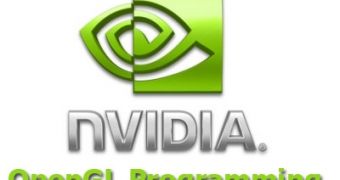Nvidia announced yesterday the release of a new series of drivers, a beta version, which comes with support for the recently unveiled OpenGL 3.0 standard from the Khronos Group. The new drivers are meant to implement the OpenGL 3.0 API and the GLSL 1.30 shading language for both Windows XP and Windows Vista, and work for selected GeForce and Quadro graphics boards. The capabilities of the new cross-platform and 3D graphics standard can now be explored by any developer. Nvidia also announced that production drivers for the new OpenGL 3.0 standard will be released as part of its regular driver development program.
Software developers are provided with a wide set of programmable 3D and 2D graphics rendering, visualization, and hardware acceleration functions through the OpenGL specification, which makes it possible for a program to run on a broad variety of hardware systems. OpenGL is a vendor neutral standard, as well as the most widely used and supported programming interface in the industry. All major computer platforms like Windows, Linux, and Mac OS include the standard.
"OpenGL 3.0 is a significant advance for graphics standard and we're proud that NVIDIA has played a major role in developing it," said Barthold Lichtenbelt, Manager, Core OpenGL Software at NVIDIA and chair of the OpenGL working group at Khronos. "OpenGL 3.0 will be a first-class API on both GeForce and Quadro boards. Shipping drivers two days after this new specification is released demonstrates our strong commitment to the OpenGL developer community and our partners who rely on the standard."
The Khronos Group controls OpenGL, and a wide number of features has been introduced with the new 3.0 version, all meant to increase the functionality, flexibility, and performance of the open, cross-platform standard for 3D graphics acceleration. Vertex array objects, enhanced vertex buffer objects, 32-bit floating-point textures, render and depth buffers, texture compression schemes, sRGB frame buffers, and an upgraded shading language are some of the new features.
Nvidia's haste on the driver support should be quickly followed by a similar release from AMD. Since Nvidia released only drivers for Windows, we should also see upgrade process for alternative operating systems. OpenGL 3.0 support will be available in the future for both Linux and Mac OS X. Some minor patches should do the trick for them as well, so there will be no need for major operating system releases.
The new Nvidia drivers can be downloaded from Softpedia.com as well, for Windows XP 32-bit, XP 64-bit, Vista 32-bit and Vista 64-bit.

 14 DAY TRIAL //
14 DAY TRIAL //